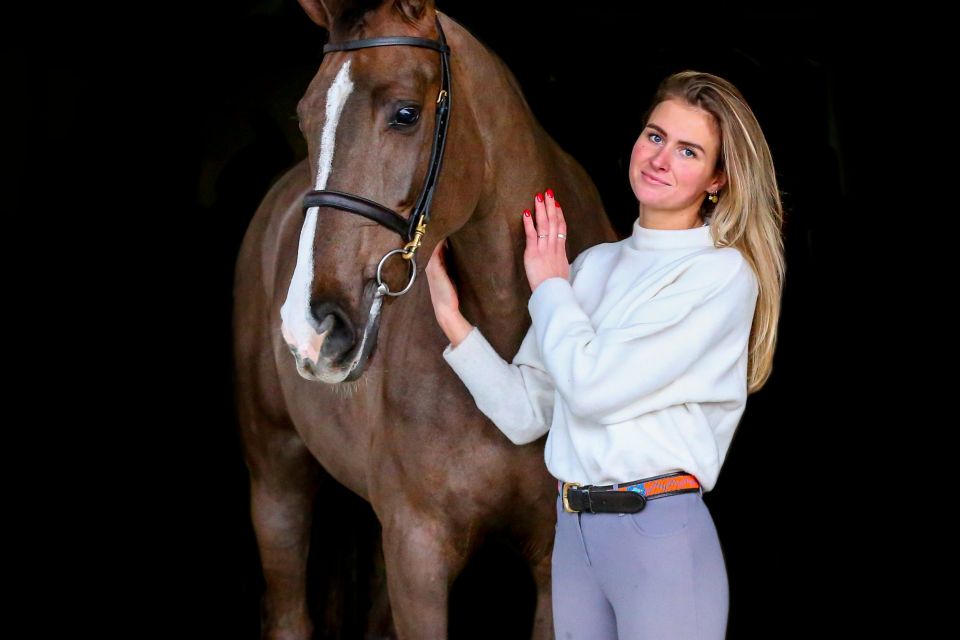04 July '24
Ben Verheij talks about his great passion…breeding showjumper horses
/
Breeders Portrait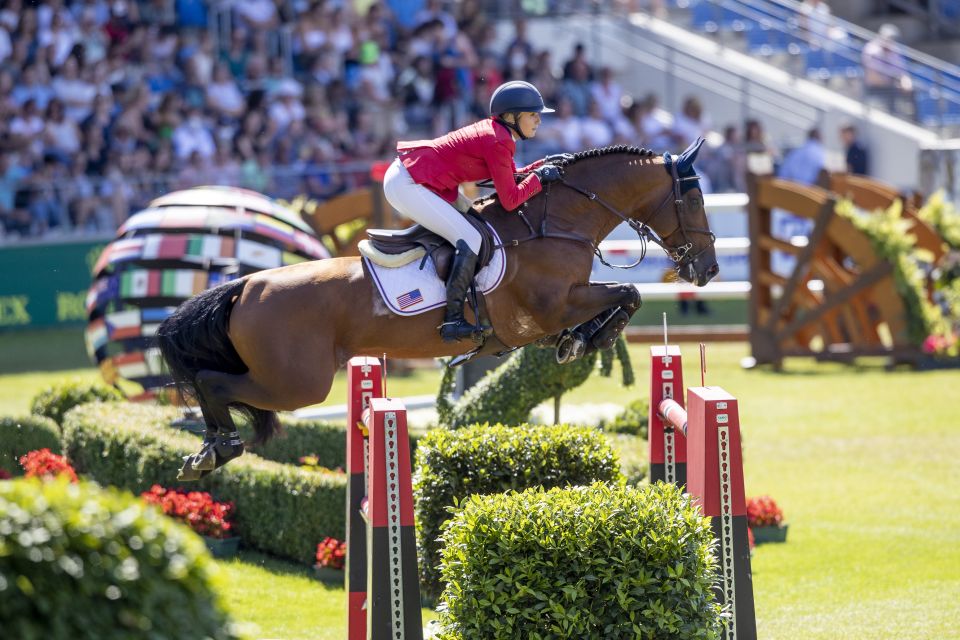
@hippofoto.be
The stallion Agana van het Gerendal Z is making furore in America. Together with lady rider Lillie Keenan this is a golden combination. Born in the yard of proud breeder Ben Verheij in Scheulder, Limburg, he has developed into a horse of fame. We went to visit Ben, in his daily life still active in his dental practice Dental Care Plus in Hulsberg. A busy life combined with a great passion for breeding showjumpers.
How did you get involved with horses?
‘I got introduced to horses when I was five. At that time we didn’t have horses at home. When my father went to the cattle market in Battice in Belgium he used to drop my brother Max and myself off at a riding school in Gronsveld, which was owned by relatives of my father’s. There we learned the basic principles of horse riding. When I was twelve the first ponies arrived in the Verheij yard. I came as far as level Z in national riding sports. I was not an extraordinary talent, at that time circumstances were different and so were perceptions. Ben continues with a smile: ‘When I went off to study in Nijmegen it was agreed that my brothers would train my horses during the week to enable me to go to competitions in the weekend. But in reality nothing much came of it because in the weekend my horses proved to be too fresh and less-trained than my brothers’ horses. By now times have changed. Horse sports have become a lot more professional.’
How did you get into breeding?
‘Once my active riding career came to an end somewhere around 1982, my father and I bought two Rigoletto mares for breeding. Back then we already used the ‘Big Four’, the four Stud farm Zangersheide stallions, namely Almé Z, Ramiro Z, Fürst Ferdinand Z and Graf Gotthard Z. After years of doing modestly well in breeding I started to realise that strong mare lines actually matter as well.’
How did you come to that conclusion?
‘When my father and I embarked on breeding we were easily impressed by papers listing a series of impressive stallion names. After a few years of trial and error and some bitter disappointments, we soon grasped that the bottom line on the pedigree is in fact far more important. So in 1993 the first mare from the Freiminka line was purchased and Limminka came to Scheulder.’
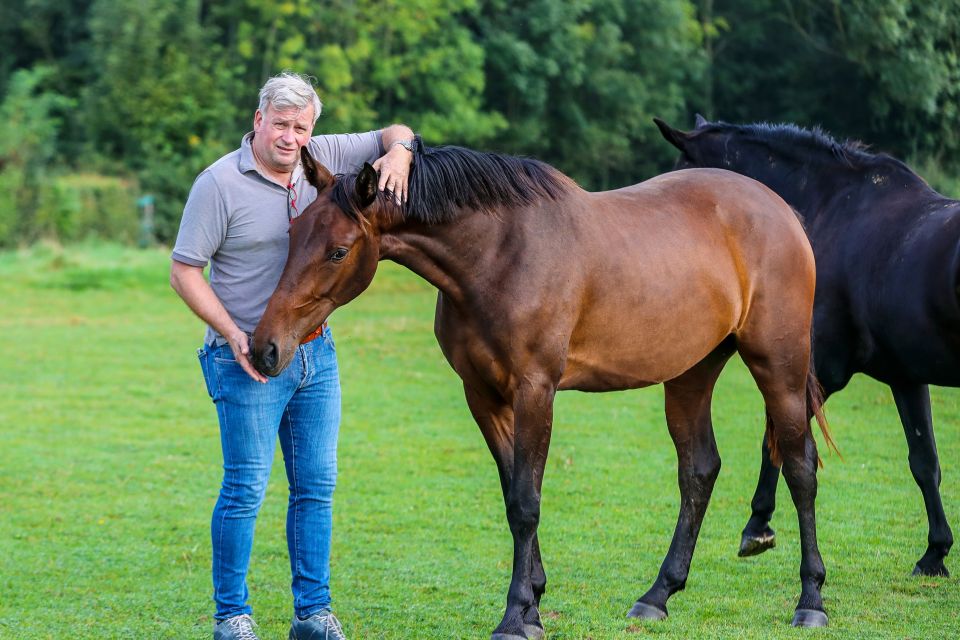
Why that mare specifically?
‘After some extensive research and also on the advice of the late Rob van Beek, who worked for the KWPN at the time, we zoomed in on the Freiminka pedigree, a solid line founded by the Okkema family in Vrouwenparochie, Friesland. In those days their foundation mare Viola (by Farn x damsire Camillus) produced horses that made furore across the world. Limminka was a daughter of Topas x Carelda, by Akteur and immediately proved to be a very good horse. She was fantastic in freejumping. We had her covered as a 3- and 4-year-old but she didn’t become pregnant, unfortunately. Limminka was initially schooled by my then wife Sandra, after that the reins were taken over by Emile Tacken who continued her education up to Grand Prix level until the moment when she was sold to the American Allison Firestone.
In 1995 Limminka’s full sister Naminka came to us. She would go on to be the foundation dam of our breeding programme, she is Agana’s dam. I have a strong penchant for the Freiminka pedigree. Besides that I’m also terribly pleased with several mares from the Roosakker pedigree.’
Why the fondness for the Freiminka and Roosakker lines?
‘The Freiminka pedigree is my great love. I’ve been breeding with that line for over thirty years now and I owe my biggest successes to that line. The Roosakker pedigree crossed my path a few years ago. Especially the Atoucha line brings top-quality horses with great sharpness. I own a half sister of Dourkhan Hero Z (Gin Tonic van het Gerendal Z) who is presently stabled in Emile Tacken’s yard for her education. She’s a delicate, acutely alert mare, but with heaps of quality. Then there is an Agana daughter from the Electra van het Roosakker line who’s currently being schooled by my daughter Jil. And some years ago a granddaughter of Panama du Seigneur ( Darco x Heartbreaker) was added to the pool of broodmares.’
Echo and Agana are well-known stars from your breeding. Can you tell us a bit more about them?
‘The rolls of honour of these horses are impressive. Listing all their victories and top placings is just too much. Both horses have won World Cup competitions, Echo in Riyadh with Manon Hees. Agana won the Longines World Cup class in Las Vegas and recently the 1.60m Grand Prix in Wellington. Breeding good-quality horses is one thing, but where they end up is just as important. When Agana was sold to Cian O’Connor via Abdel Said when nearly a 7-year-old, he ended up with the, at that time, very young and unknown Lillie Keenan. In retrospect, this is the best that could have happened to the stallion. Together they progressed to the cast-iron combination they are today. Those two have a phenomenal click and the obvious question is, whether it would have been the same with a different rider. It’s a fine thing when your horse ends up in such good hands and when you can be on such great terms with the person who knows how to appreciate your breeding product. That is what motivates breeders. I have closely followed Agana right from the start. It soon appeared to me that those two had a great bond and that the stallion had come to a very professional setting indeed.’
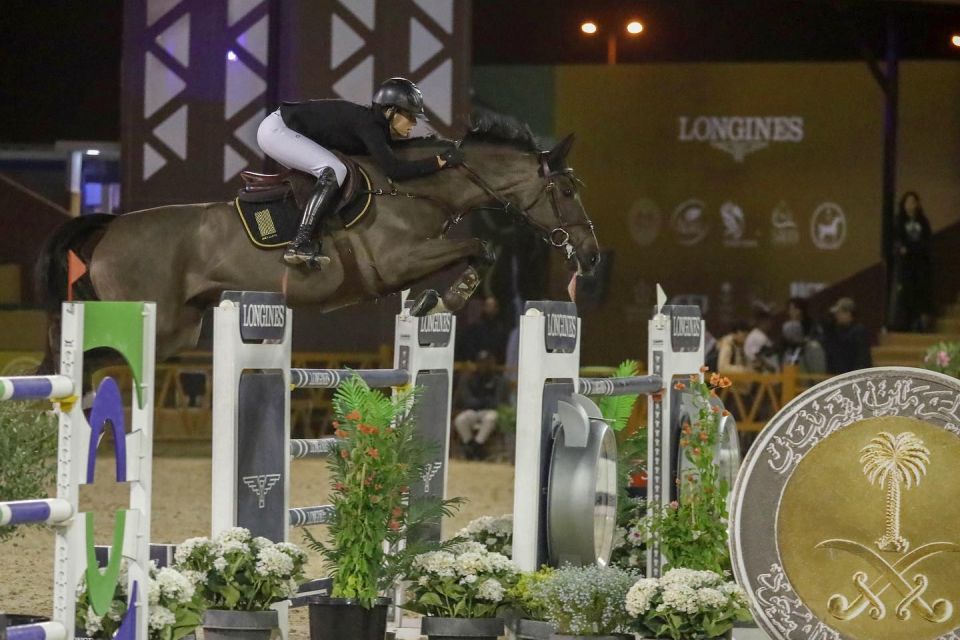
What’s it like for a breeder to follow the successes of your breeding product?
‘It keeps giving me goose bumps’, Ben answers, ‘Every single time feels special. We frequently get in touch, it does create a special bond.’
Who, apart from Echo and Agana, are other well-known names from your breeding?
‘Less-known, but very dear to me: Vimminka (by Nabab de Reve x Naminka ). Via Emile she ultimately ended up in Ireland with Australian rider Scotty Barclay, who earned himself a nomination for the London Olympic Games with her. This boom came to an abrupt end when the mare was diagnosed with oesophageal cancer. Because the mare was given an artificial oesophagus she was no longer qualified to take part in FEI competitions. With Alexander Butler she became a national celebrity in Ireland, where they won countless national Grands Prix. By now she has produced another two top showjumpers by Pacino, one of them ended up in the USA via Ashford Farm.
Then there is Illinois Z, 1.50m qualified with Leon Thijssen and sold off to America at a later stage. Extra-special about Illinois: sire Iowa 960 was a son of Libero H out of the mare Bruminka, just like dam Naminka, so both from the Freiminka pedigree and therefore a product of linebreeding. Illinois Z’s full brother Tissem Z is also active in America. Apollo Z, a full brother of Agana, made it into the final of the 6-year-olds during the WC Young Showjumpers in Lanaken with Marcel Willems and these days jumps in America with Lauren Ditallo.’
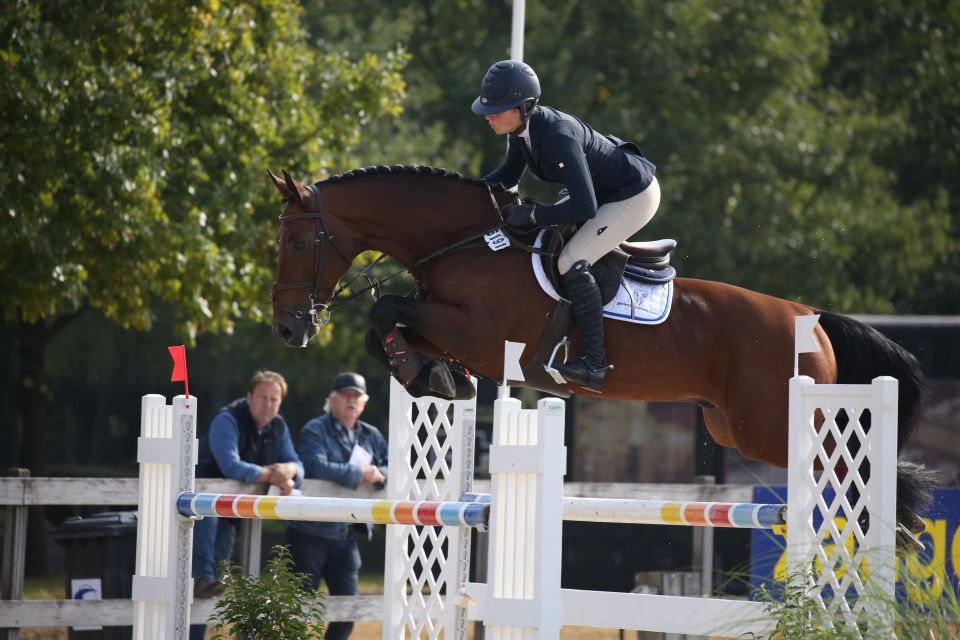
How do you come up with a combination of stallion and mare, and what factors play a role?
‘First and foremost I look at the genetics. To me a very strong dam line is leading. When the dam line leads directly back to a mare who used to perform exceptionally well and clearly passes that on to offspring, then such a stallion instantly peaks my interest. Aganix is a fine example. He harks straight back to the phenomenon Gute Sitte, with fine inbreeding again via Ogano Sitte. Other factors are feeling and experience. I would never breed with a very good stallion that comes from an average or less-good pedigree. The pedigrees of the stallion and mare have to be top quality. Another thing I’d never do is follow the crowd, I wouldn’t breed with the stallions everyone uses. I reject stallions that everybody suddenly tries to get hold of. The past has shown me that too often hypes can be really disappointing. My approach is to select a stallion by looking carefully at genetics. For me the feeling I have about the ‘phenotype’ has to be love at first sight too.’
What, in your view, are true top stallions with super siring qualities?
Ben: ‘In my eyes the true ‘Chefs de Race’ from the past were Almé, Cor de La Bryere, Baloubet de Rouet and Capitol. They were stallions who have significantly influenced showjumper breeding through their progeny. These days there are of course other good-quality stallions at various stations too but evidently, Aganix du Seigneur Z and Agana are very high on my list. Finding a good-quality stallion is not that hard. Good mares, that's a lot more difficult. You won’t find out if a mare has a good hereditary blueprint until she’s around fourteen to fifteen years old.’
Will Agana van het Gerendal Z become available for breeding?
‘I think the Keenan family will make the stallion available for breeding after his career in the sport. And in order to give a stallion the most opportunities, I personally think that evidently, that will be in Europe.’
Do you only breed with proven sires or do you also risk using young stallions, that have as yet no offspring?
‘I personally greatly value the pedigree behind the stallion or mare. But obviously, their own performances also count. In the past I primarily chose proven stallions, but in recent years I’m not too worried about using young stallions, sometimes even when they haven’t got offspring. My approach is to try and be one step ahead. Look at Aganix back in the day. I saw him jump in freedom at Luc Henry’s place when a 3-year-old. He convinced me right from that first jump. After that day I kept close tabs on him during his young years with Michael Korompis. Based on the information I gathered I realised that he was a true phenomenon. It’s such a shame that the stallion missed out on a great career because of an injury. Knowledge of dam lines is super important for a good breeding programme. Simply sticking famous names together as is so often the case, is not enough. Right now there certainly are very exciting young stallions from highly-proven dam lines that are on my radar.’
Which stallions do you currently use for breeding?
‘This year I’m expecting foals by for instance, Aganix du Seigneur Z, Contagio Z and Comme il Faut. For the next stud season I’m looking to use Echo van het Spieveld, Aganix du Seigneur Z and Agana again. I know what these stallions are going to produce in combination with our mares.’
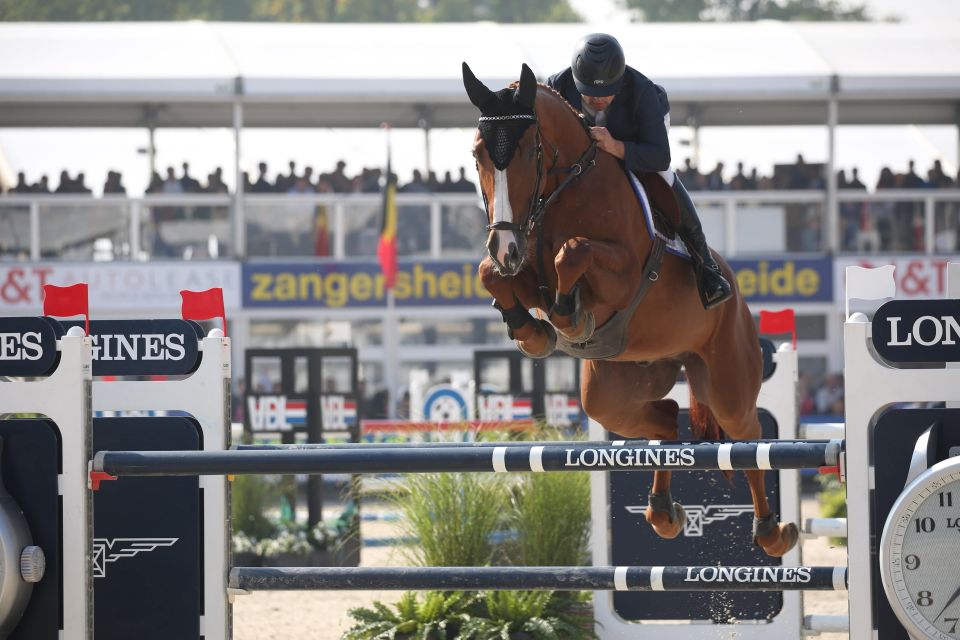
Raising young stock, selection and education, how do you organise that and who are the people who play a role in those processes?
‘My young stock get to do some freejumping quite early on, usually during the first winter. Very low, but still. What can I tell from a yearling who jumps in freedom? I can tell if the rudimentary skills are present. The really bad ones are easy to spot, but for the others it’s too tricky to draw far-reaching conclusions. I’ve seen so many changes in them, sometimes for the better and sometimes for the worse. Colt foals are always outsourced to a foal-raising yard. I try to keep the mares here as much as possible. The first selection takes place at eighteen months when the X-rays are taken. That’s the moment when the first, really unhealthy ones are uncompromisingly rejected. After that the selection process continues gradually on the basis of feeling and quality. The better the quality, but especially the feeling, the longer I’m inclined to hang on to a horse. Sometimes this is difficult to explain. The more you know a pedigree, the better you can interpret all the early information. More insight into raising young stock and selection, knowing your animals, in my eyes that’s vital. Feeling and experience play a role too. The horses from my pedigree are, generally, fairly late to mature. That part of the process takes place together with my friend René Janssen. Occasionally horses get sold at a young age, but usually they get their education from my daughter Jil, and some go to Manon Hees and Emile Tacken.’
Ben still remembers Agana's years as a youngster. ‘Till the age of three he was turned out in a large herd in northern Limburg. He was pretty boisterous when he returned home to us. But we were keenly enthusiastic right from the first jump we saw here. We knew this was a truly exceptional horse who exceeded all our expectations.’
At what age are your horses generally sold?
‘Usually my foals stay until they are three or four years old. Then a first selection takes place on the basis of health, freejumping aptitude and also on feeling. The best go on to get their education. Subsequently the moment of sale is determined based on quality, expenses and expectations. It’s hugely expensive to keep them all on until a higher age. I do however, gladly invest in horses that give me a good feeling and who show a strong development. That’s our passion and in the end, a profitable approach.’
What’s your view about starting your horses’ education at a young age?
‘Here the horses are usually started under saddle by the time they are three. The training of stallions continues after that because it's not so easy to put them back in the field. The mares usually get back to the field. The longer we live the more we learn’, Ben adds with a smile. ‘The less we do at a young age the better it is for the horse. Years ago I was convinced to start these horses in the youngster competitions, these days patience has taken over. It happens that young horses get a bit overloaded, which is the reason why top talents quietly exit through the back door. If they had been given more time, most likely they would have developed better and come further. As I get older I more and more come to realise that we should be far more patient with youngsters, especially with the high-quality ones. What I often see is that the very willing youngsters are asked to jump in higher categories far too soon and too frequently. In my view it’s better to go four steps too slow than one step too fast. A young horse with heaps of quality that is thrown in at the deep end just that one time, can be ruined for the rest of its life. Every step of a youngster’s education must be thoroughly established before it can be asked to carefully take the next step. Once the basis has become embedded by means of respect, common sense and patience, they often progress really fast when they are 8- or 9-year-olds. Of course there are exceptions. Look at Agana, who came 4th in the World Championship 5-year-olds with Jil.
Entering all youngsters for these competitions is not a must for me. When there’s a good opportunity and it feels okay then it may happen that some are put on the starting list. But there’s no must, we take our time and patience with young stock. Before they take part in such competitions we have to be 100% convinced that the horse can cope. Throughout the years, and many experiences the richer, I have adopted a more balanced attitude.’
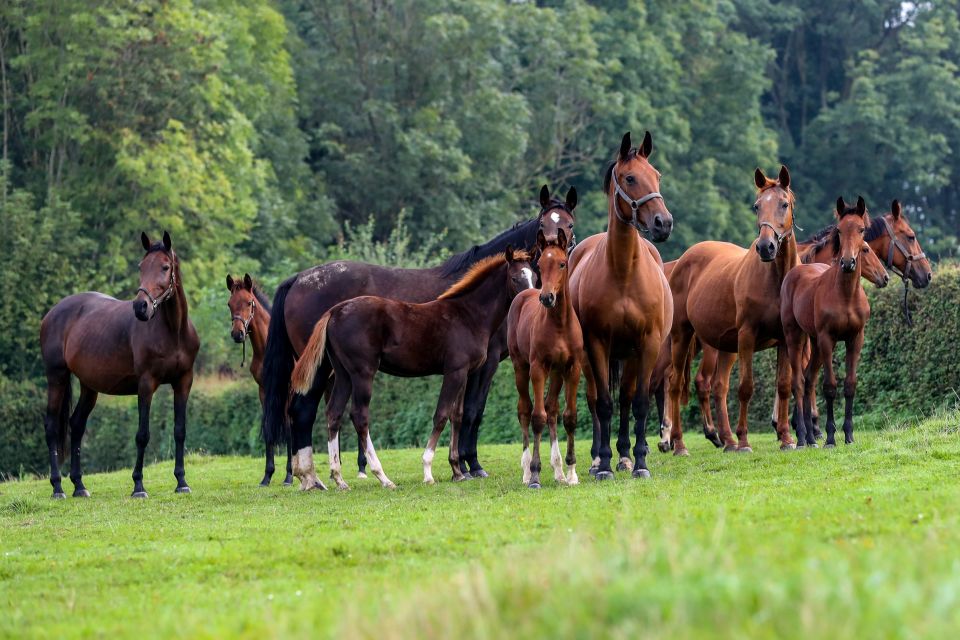
What’s your take on the future of your own breeding and breeding as a whole?
‘Above all sharing a passion for and with my daughter Jil. Breeding on a modest scale, definitely not large-scale, that rarely leads to anything. Most top horses come from smaller breeding studs. Small stud farms where horses get attention, get seen and get opportunities. That's the way to keep things better under control. My aim is to breed around four to five foals per year.
By now we have such a blended gene pool in Europe that’s it’s nigh impossible to speak of a Dutch, German, French or Belgian horse. I still like going to Holstein. There’s still quite a different culture in Holstein where people look more at the horse itself and less at the genetics of the dam lines. This is quite the opposite of Belgium, where dam lines are examined to the extreme but the model slightly less so.
Which people are important in your horse world?
‘Without selling other people short, I’m happy to name a few. First of all René Janssen, my greatest help and stay and right hand. A horseman filled with passion. We talk a lot about breeding, foal-raising, selection, and René also assists me with the everyday care for the horses. A second person I’d like to mention is Jac Remijnse, former publisher of the breeding magazine ‘Horse Genetics’ that for years used to be a high-profile mainstay in the world of breeding. Jac is very knowledgeable in the area of linebreeding. He acquired this knowledge partly thanks to his thorough research of Thoroughbred breeding. I always consult him in detail about stallion choices. I’ll give you this: both Agana and Allminka are products of Jac’s pairing advice.
Otto Boje Schoof from Hedwigenkoog, Germany, is someone else who I hold very dear. He is, among other things, the breeder of Cento and Uricas van de Kattevennen and he has taught me to assess a horse from a different perspective. First and foremost examine a horse’s back, is one of Otto Boje’s wise lessons. A closed loin section is a must for any good showjumper. I greatly admire this man who has achieved so much. He’s one of the best breeders in the world and has founded a fantastic mare line.
And obviously there is Léon Melchior, in my view already a great visionary back in the day. The first time I visited Zangersheide was in 1976, when it was still very much in its developmental stage. Gerard Franssen was employed at Zangersheide and since he was a member of our riding school we were treated to our first tour there. No one else in the world has had such a positive influence on the breeding of showjumpers as Léon. A man with an unlimited mission. In his mind he was twenty years ahead in the breeding of showjumpers. This man has been a blessing for breeding, first in this region but later too in Europe and across the globe. He was the one who kickstarted AI (artificial insemination) at a time when this was still very much a controversial issue. Embryo Transfer soon followed. These days commonly accepted, back then condemned and reviled.’
What is Jil’s role in the education of young horses?
‘Jil has inherited a great sense for horses from her mother. From her she learned from a very young age to school horses with lots of patience and respect. As a bonus she had the good fortune when still pretty young to ride a large number of very good horses that became active in the big sport at a later age. She knows what to look for in terms of feeling. We certainly don’t aspire a large sport stable. Breeding, raising and then providing a thorough education the way we consider best, that is where our passion lies.’
Is Jil also interested in breeding?
Experience tells me that the interest for breeding starts to develop at a later age. Generally speaking, it’s usually the better riders who appear to be more interested in genetics. Very smart!’
Author: Wil Smeets
